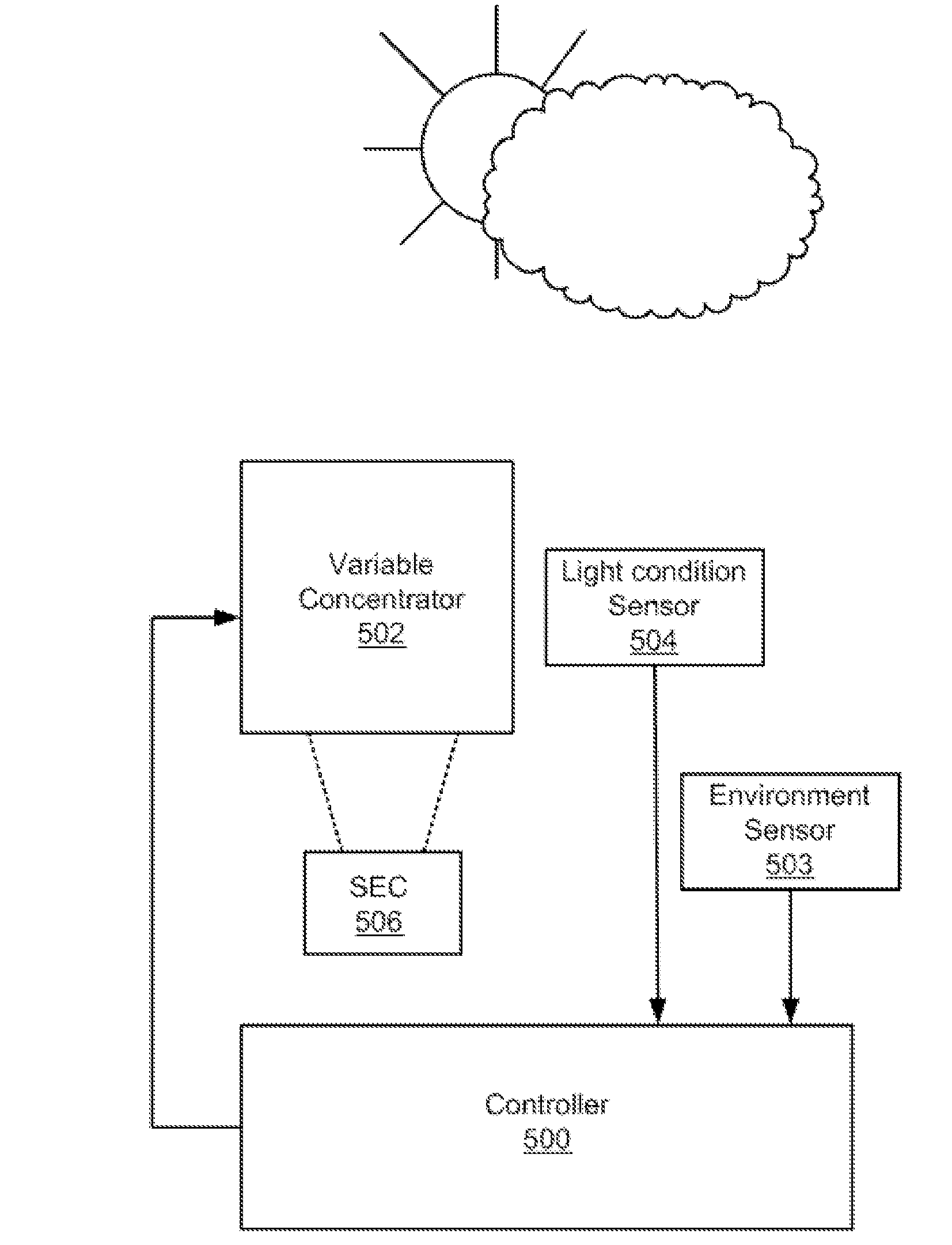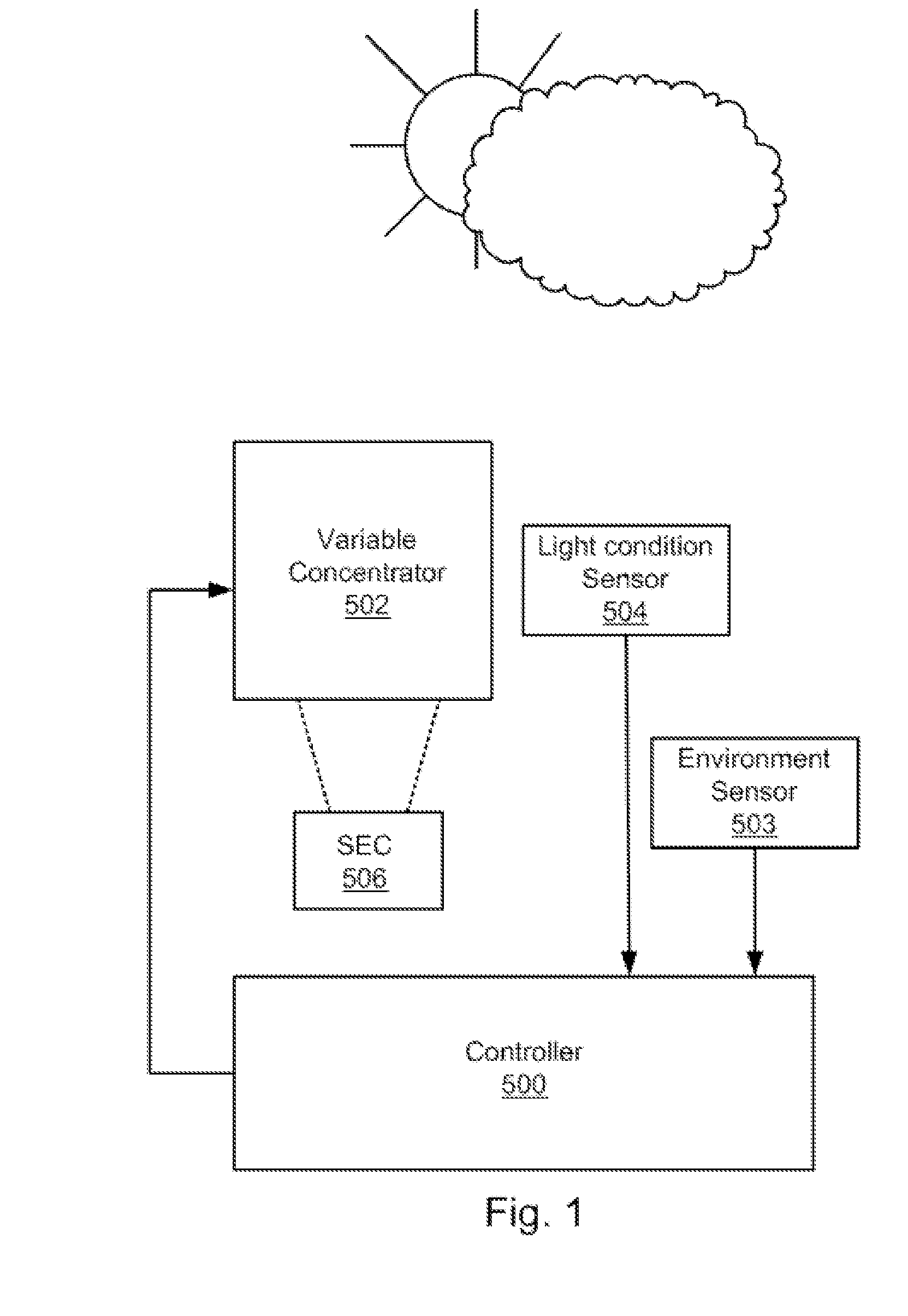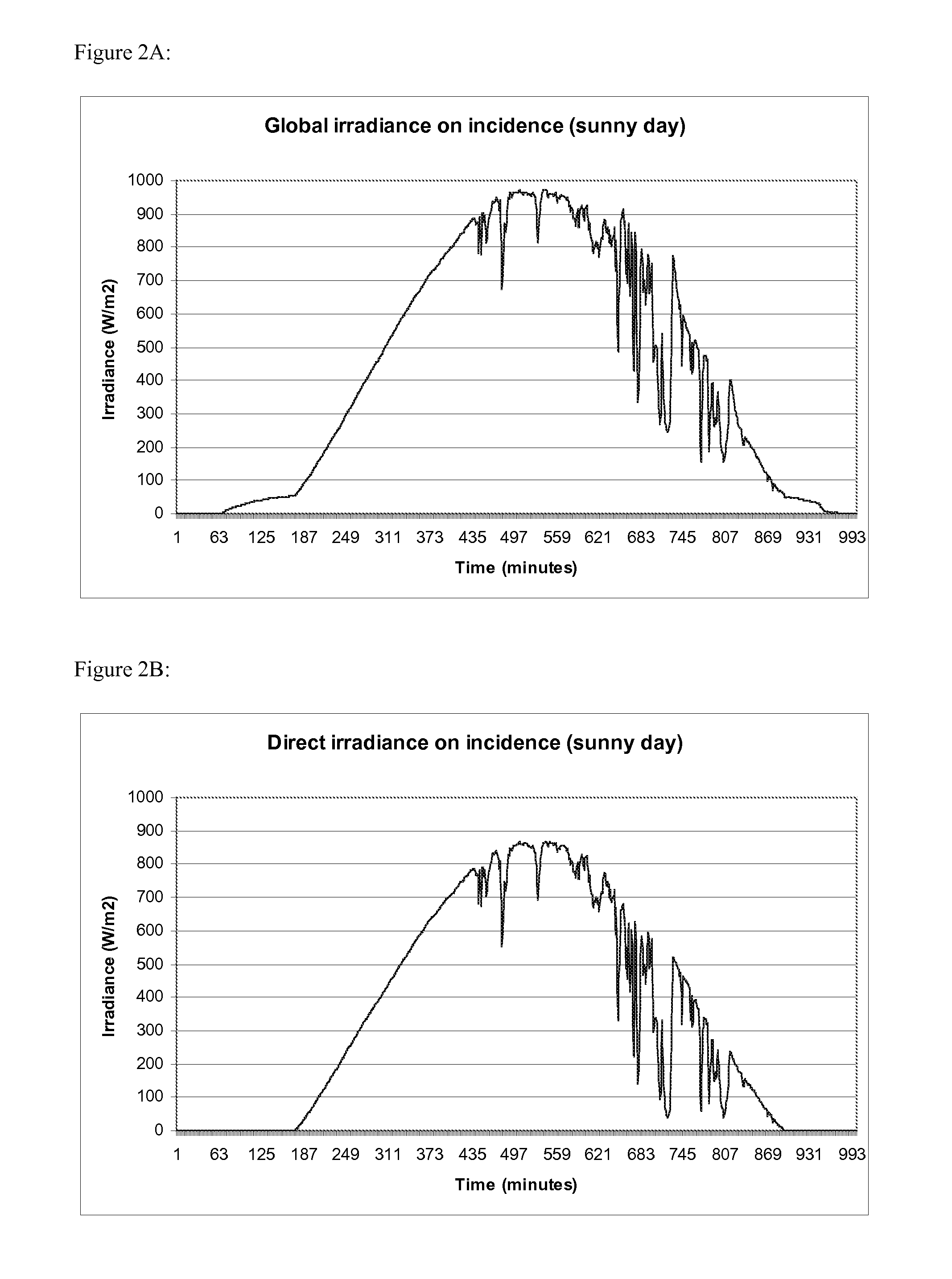Adaptive solar concentrator system
a solar concentrator and solar energy technology, applied in the direction of solar heat collectors, solar-ray concentration, moving/orienting solar heat collectors, etc., can solve the problems of low high cost of direct solar electricity generated through photovoltaic (pv) systems, and the effect of reducing the efficiency of diffuse scattered ligh
- Summary
- Abstract
- Description
- Claims
- Application Information
AI Technical Summary
Benefits of technology
Problems solved by technology
Method used
Image
Examples
Embodiment Construction
[0053]The sun's radiation reaching the Earth is comprised of “direct” radiation (direct sunlight) and “diffuse” radiation (sun light scattered by the atmosphere, clouds, etc. plus the light reflected by the ground and other objects). The relative amount of direct / diffuse radiation is constantly changing, primarily in response to environmental changes. Generally, the present invention enables the optimization of the energy harvested by a solar energy collector (SEC) under such variable light conditions, especially in response to variable amounts of diffuse versus direct radiation impinging on the SEC. The present invention provides an adaptive solar concentration system and method for controlling the solar irradiance impinging on an SEC. The system comprises a concentrator having a variable concentration ratio and a controller in communication with the concentrator and with a light condition sensor (which can also be referred to simply as a light condition sensor) that provides a lig...
PUM
 Login to View More
Login to View More Abstract
Description
Claims
Application Information
 Login to View More
Login to View More - R&D
- Intellectual Property
- Life Sciences
- Materials
- Tech Scout
- Unparalleled Data Quality
- Higher Quality Content
- 60% Fewer Hallucinations
Browse by: Latest US Patents, China's latest patents, Technical Efficacy Thesaurus, Application Domain, Technology Topic, Popular Technical Reports.
© 2025 PatSnap. All rights reserved.Legal|Privacy policy|Modern Slavery Act Transparency Statement|Sitemap|About US| Contact US: help@patsnap.com



